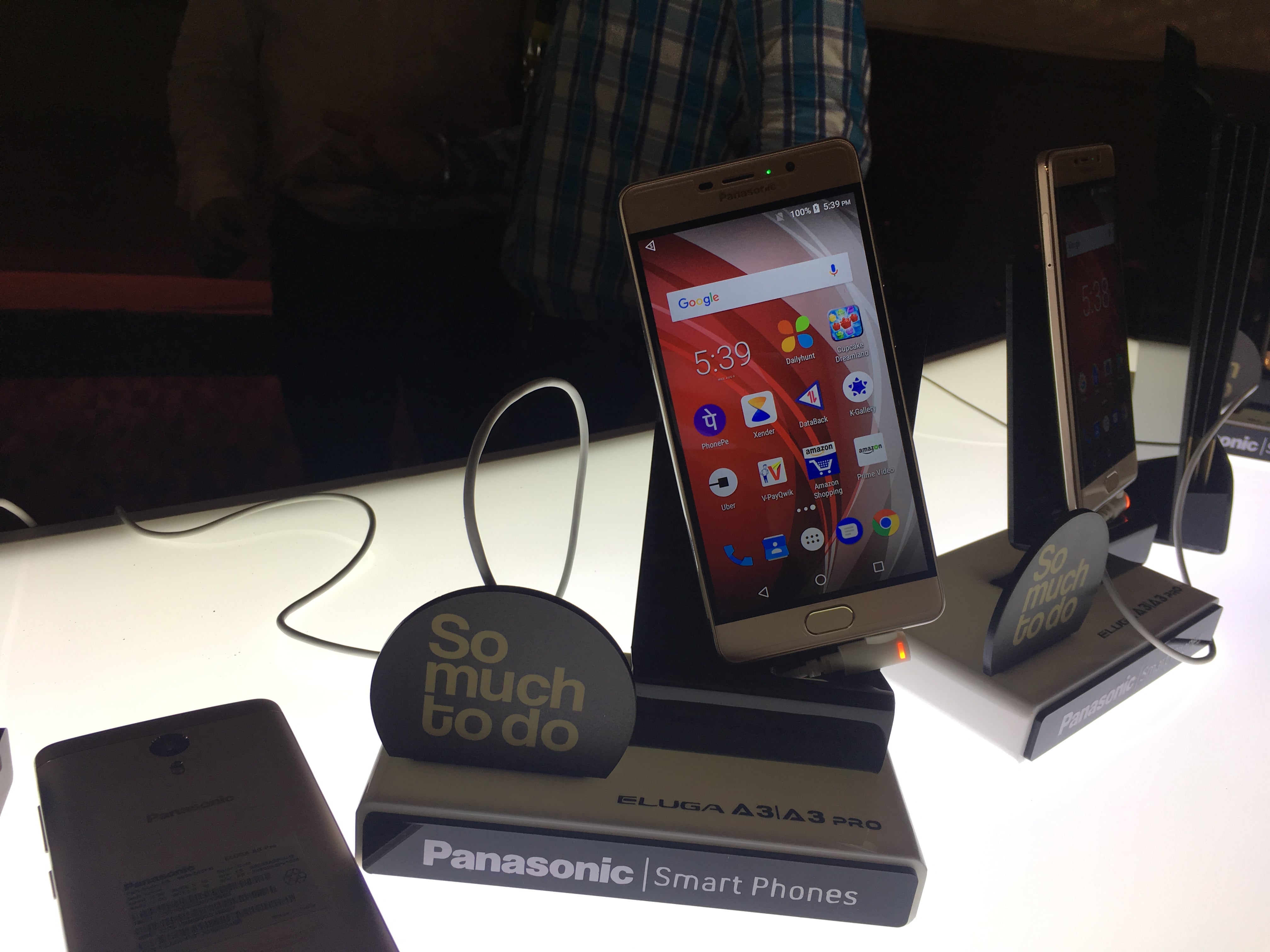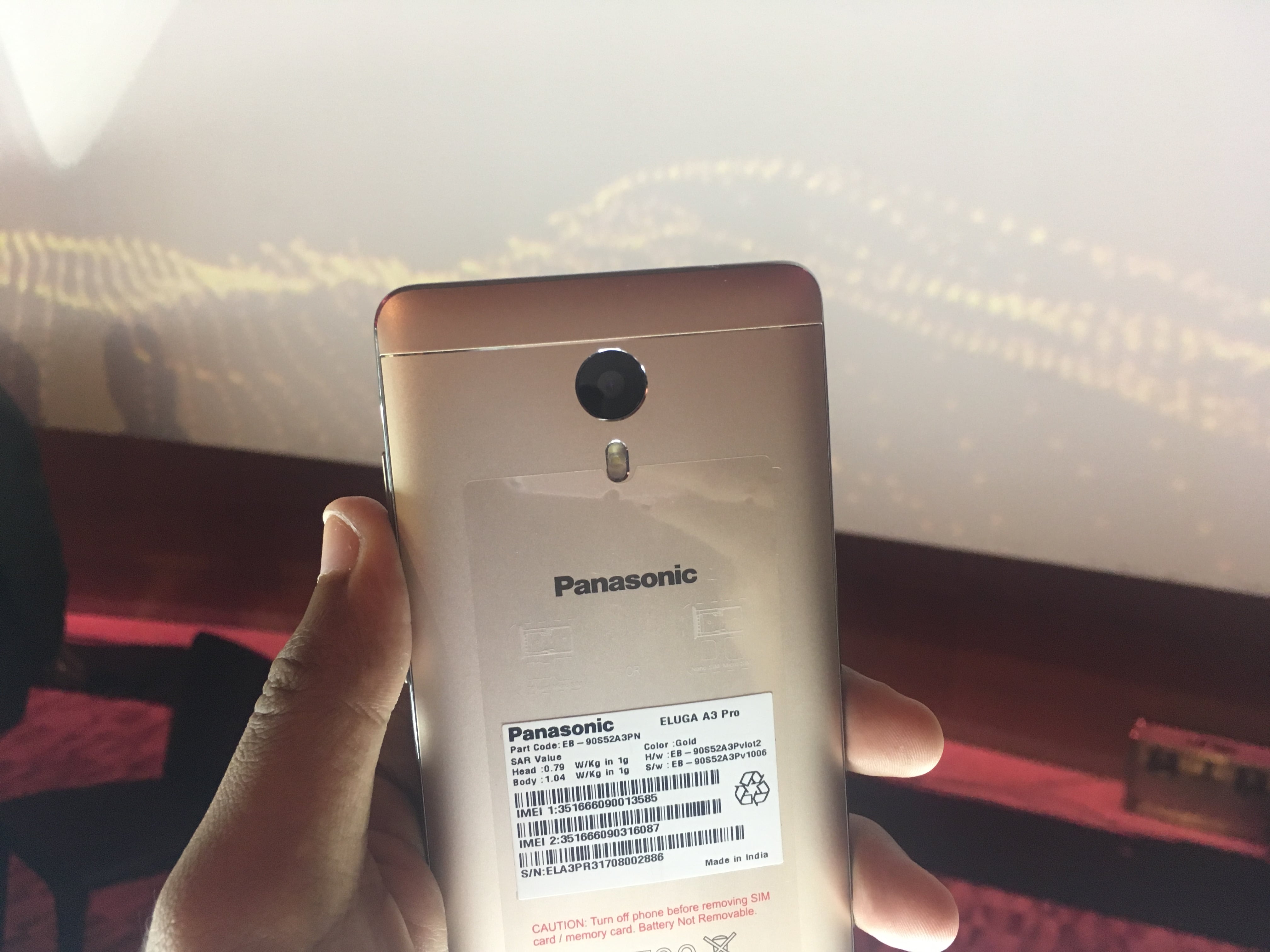Japanese multinational company, Panasonic is looking to capture some market share in the Indian market. At an event in New Delhi, the company has stated that they're going to launch 15 smartphones in the next 45 days. To kick off the things, the brand unveiled two smartphones, named, Panasonic Eluga A3 and A3 Pro.

The Eluga A3 is priced at Rs. 11,290 while the Eluga A3 Pro comes with a price tag of Rs. 12,790. Both the smartphones share a similar set of specifications, and the differences appear only in the internals. The Eluga A3 Pro has a slightly better processor, double the storage of Eluga A3.
Unfortunately, Panasonic did not showcase the Eluga A3 device at the launch. However, they both look the same. The A3 and A3 Pro smartphones from Panasonic sports metal body design and has a thickness of 9.1mm. Both are dual-SIM smartphones that weigh in at 161 grams.
The Eluga A3 and A3 Pro has a 5.2-inch HD display, which is a massive letdown. Panasonic's direct competitors such as Xiaomi, Lenovo, Motorola, etc. are offering Full HD displays at a smaller price point, but Panasonic's offering is just limited to an HD display. The displays are protected by Dragon Trial Glass on top.
[youtube https://www.youtube.com/watch?v=uLiRSwpoGFE]
Coming to the hardware, the Eluga A3 is powered by a quad-core MediaTek MT6737 processor, clocked at 1.25GHz, under the hood while the Eluga A3 Pro houses a 1.3GHz octa-core MediaTek MT6753 SoC on the inside. Both handsets feature 3GB of RAM and run on the Android Nougat 7.0 operating system. Both the smartphones come laden with Panasonic's AI assistant Arbo preinstalled.
The Eluga A3 packs in 16GB of internal storage and on the other hand, the Eluga A3 Pro comes with 32GB of internal storage. Both the Eluga A3 and the A3 Pro offer an option of expanding the onboard storage up to 128GB via a microSD card slot.
The chipsets in the Eluga A3 and A3 Pro smartphones doesn't inspire confidence, and they don't stand against the likes of Snapdragon 625 or Snapdragon 653.

When it comes to the optics department, the A3, as well as the A3 Pro, feature a 13MP camera with LED flash and PDAF on the rear panel of the devices. There is also an 8MP secondary camera on each of the phones that sit on the front for selfies and video calls. In my brief usage of the phone, the camera fared pretty well, but it seems not to come anywhere close to the competition. The shutter speed was decent as well, but again, it doesn't match the competition.
The USP of both the devices is the beefy 4000mAh battery, which is rated to deliver two days of battery life. In terms of connectivity, the two devices come with options such as Bluetooth 4.0, Wi-Fi 802.11 b/g/n, GPS, OTG, micro-USB 2.0, and 4G VoLTE support.
Having said that, Panasonic's new smartphones are priced aggressively, and there are more alternatives such as the Xiaomi Redmi Note 4, Lenovo P2, Huawei Honor 6X at the same price bracket.















